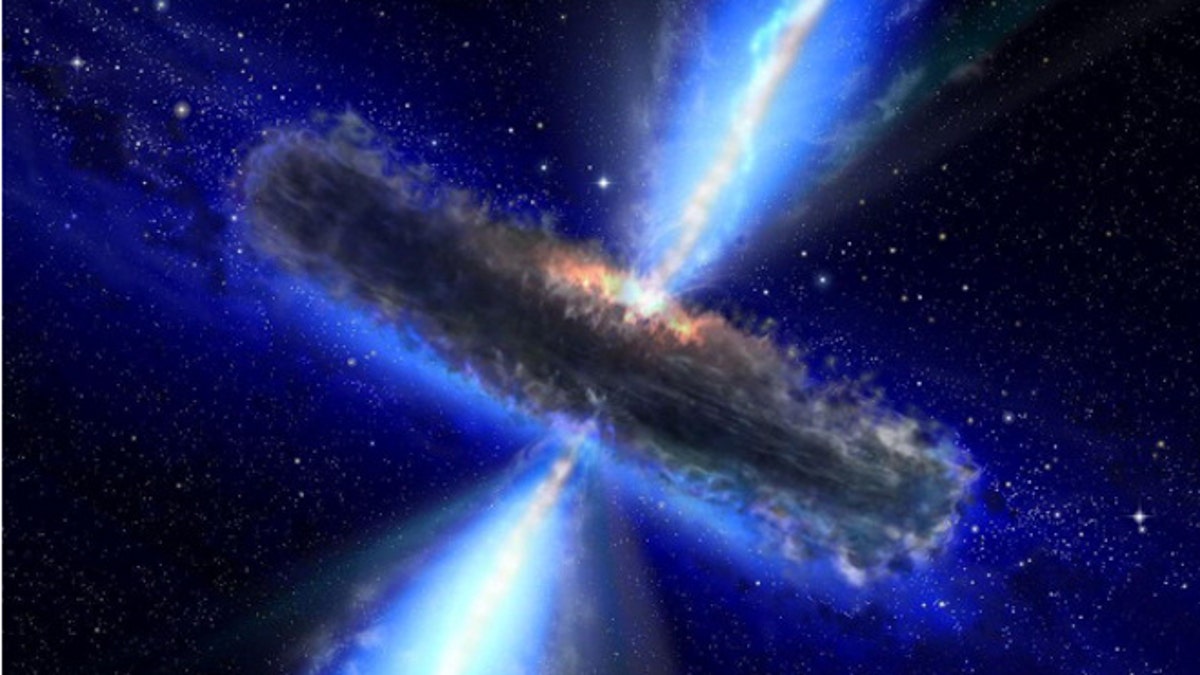
IN SPACE: In this handout from NASA/ESA, an artist's concept illustrates a quasar, or feeding black hole. NASA's Wide-field Infrared Survey Explorer (WISE) revealed millions of potential black holes in its survey of the sky in 2011. The WISE telescope, which ceased operation is February of 2011 after it ran out of coolant to keep its electronics cool, made the full sky image and was released to the public in March with hopes of astronomers making discoveries. (Photo by NASA/ESAvia Getty Images) (2012 NASA/ESA)
For most people, black holes are a massive cosmic phenomenon that takes everything in its path, but scientists studying a massive explosion that erupted from the Milky Way’s super massive black hole two million years ago have found that these celestial enigmas have a certain level of finesse to their activities.
As reported by Latinos Post, the new research shows that black holes can switch between power levels, going from maximum output to a proverbial rest state in a relatively short period of time.
Martin Rees, an astronomer involved in the University of Sydney- led study, said it’s been long suspected that “our galactic center might have sporadically flared up in the past,” adding that these observations are a highly suggestive “smoking gun.”
“The realization that these black holes can switch on and off within a million years, which given the universe is 14 billion years old means very rapidly, is significant,” said lead author professor Joss Bland-Hawthorn.
According to Latinos Post, researchers at the university were puzzled over a strange glow in the Magellanic Stream, a hydrogen gas stream trailing the Milky Way’s two companion galaxies. They found that the glow correlated with a theorized cataclysmic event in Sagittarius A*, the region surrounding the super massive black hole at the center of our galaxy.
Radiation levels in this region indicate that there was a massive eruption two million years ago.
“In 2010 NASA’s Fermi satellite discovered two huge bubbles of hot gas billowing out from the center of the galaxy, covering almost a quarter of the sky,” Bland-Hawthorn said. “When I saw this research I realized that this same event would also explain the mysterious glow that we see on the Magellanic Stream.”
He said astronomers have suspected for 20 years that such a significant outburst occurred.
“But now we know when this sleeping dragon, four million times the mass of the sun, awoke and breathed fire with 100 million times the power it has today,” Bland-Hawthorn said.
To read the full published study, go to The Astrophysical Journal.
Follow us on twitter.com/foxnewslatino
Like us at facebook.com/foxnewslatino
